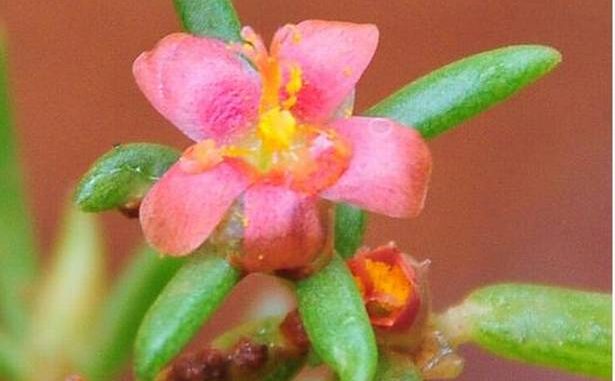
In News
Portulaca laljii, a new species of wild sun rose has been discovered from the Eastern Ghats.
In-Detail
- The new sun rose has been discovered in the Prakasam district of Andhra Pradesh.
- The plant has unique features – roots are tuberous, the flower is reddish-pink in color, fruits are prolate-shaped, seeds are copper brown in color, and there is no hair in its leaf axils.
- These features distinguish the new species from other species of the genus Portulaca.
- Botanists took an exploration of the Prakasam district between 2018 and 2020.
- The new species was first spotted in 2018 and were seen flowering in July-August.
- The flowers of the species are very minute in size, 0.5mm.
- It was found growing in rocky crevices at an altitude of about 1800 meters above sea level, very close to the ground, at about less than 10 cm.
- The flower blooming period for the plant is between June and February.
- Botanists who took part in the exploration (from Venkateswara University, Tirupathi) say that The species has rich horticultural value. They have grown the plant in their college botanical garden as part of ex situ conservation.
- They found that the plant can bear flowers for eight months.
- It is because of the succulent nature of the tuberous roots that the plant can grow even on rocky crevices.
- Portulaca genus plants are classified as Sun Rose because they flower in bright sunshine.
- Linnaeus was the first botanist to describe Portulaca as a genus of the flowering plant family Portulacaceae.
- Presently, there are over 100 taxa and are distributed throughout tropical and sub-tropical regions of the world.
- Earlier studies in India revealed the presence of eight species of Portulaca in the country.
- Portulaca genus plants show varying degrees of succulence in their vegetative parts like roots, leaves, and stems.
- For example, Portulaca oleracea is entirely succulent, whereas Portulaca tuberosa has the highest succulence in its roots.
- Portulaca species are found both in forests and agricultural fields, but Portulaca Lajii, the new species, grows only in rocky crevices.
- The new species has been placed under the ‘Data Deficient’ category of the IUCN List of Threatened Species as little data about the population of the species is available.

Leave a Reply
You must be logged in to post a comment.